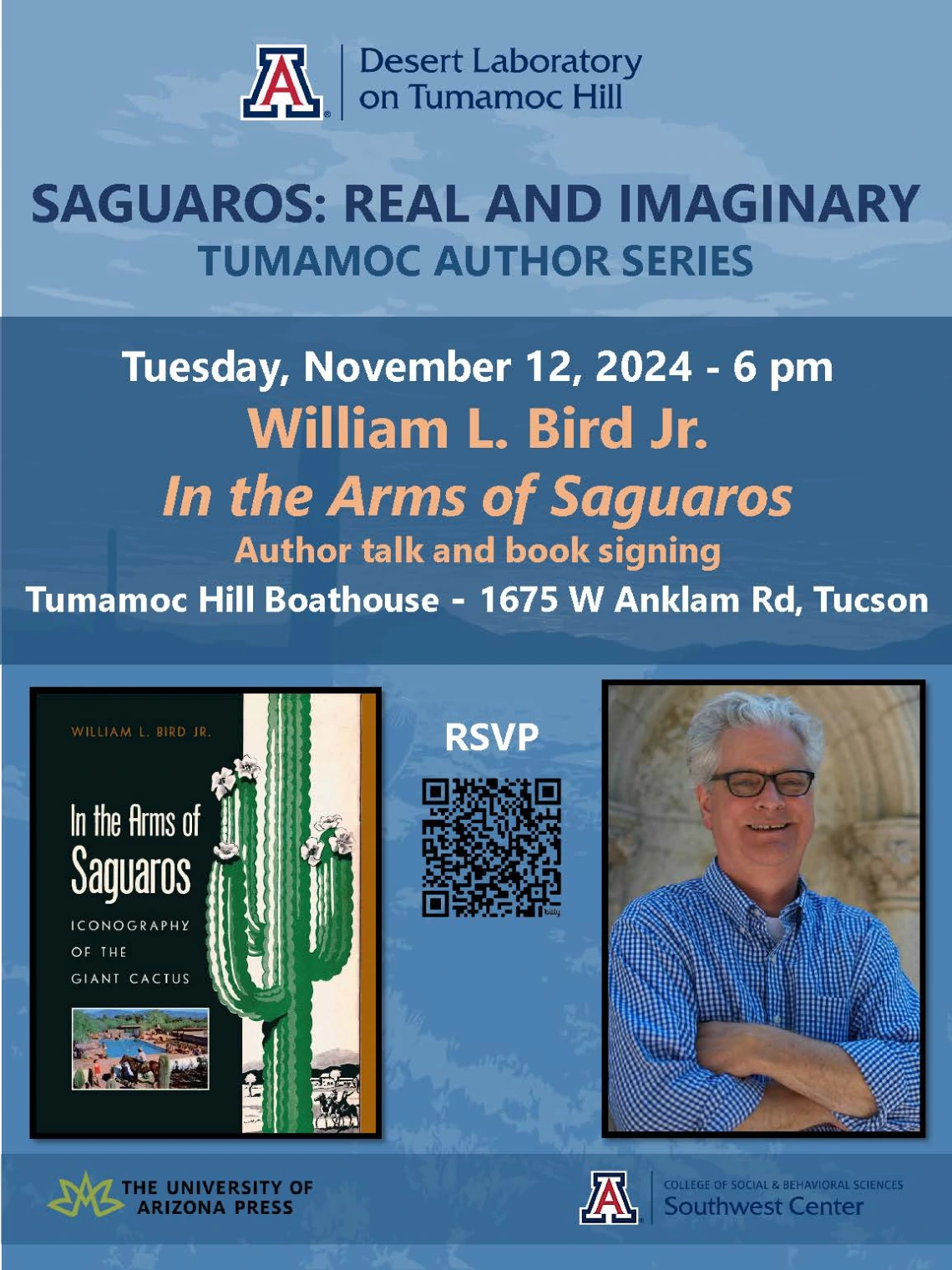By William L. Bird Jr.

When
The Desert Laboratory on Tumamoc Hill, with the Southwest Center and the University of Arizona Press, proudly invite you to the second event of the Tumamoc Author Series.
Set against the stunning backdrop of Tumamoc Hill’s golden sunsets, this series brings together voices from across disciplines, all sharing their unique visions of the Southwest. What better way to experience the magic of this region than through lively, soul-stirring conversations with acclaimed authors?
Scientists have studied saguaros on Tumamoc Hill since 1908! But even before then, in the late 1800s, the saguaro became a symbol of the west. You’ll look at Tumamoc’s long-studied saguaros in a whole new way after seeing William L. Bird’s images of saguaros, from early illustrations to modern photographs. The railroad first used saguaros to market new destinations in the American West, then all kinds of tourist destinations used saguaro iconography to attract customers to everything from health resorts to dude ranches to shopping centers. Today, the saguaro touches us as a global icon in art, fashion, and entertainment. Bird presents images from his book: In the Arms of the Saguaros: Iconography of the Giant Cactus in this Tumamoc Hill Author Series. He will be in conversation with Bruce Dinges, former editor of the Journal of Arizona History.
William L. Bird Jr. is a curator emeritus of the National Museum of American History, Smithsonian Institution. His interests lie at the intersection of politics, popular culture, and the history of visual display.

